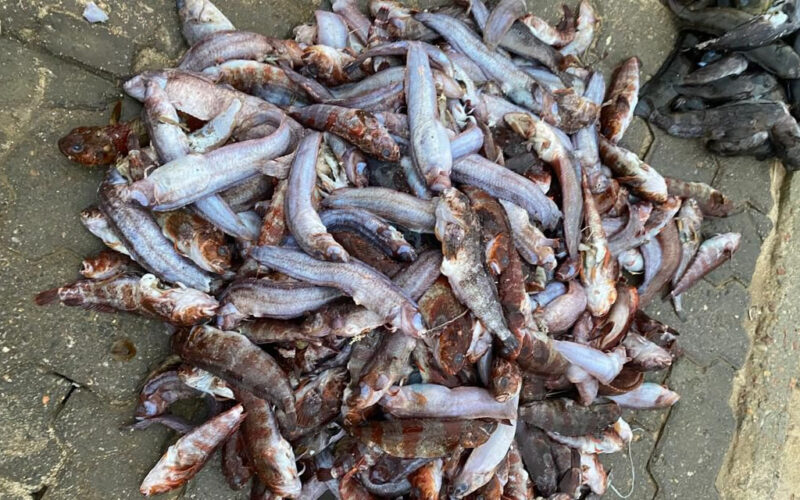Niël Terblanché
Crowds of people have flocked to the beaches in and around Swakopmund to collect large quantities of dead fish and crustaceans that washed ashore overnight.
According to Uaripi Katjiukua, the spokesperson of the Ministry of Fisheries and Marine Resources, scientists employed by the ministry said that this phenomenon is attributed to a significant upwelling of an algal bloom, commonly known as a red tide.
She said that the ministry’s scientists explained that the algal bloom emerged during the recent calm sea conditions, which were influenced by the east wind weather patterns experienced along the Namibian coast over the past ten days.
This combination of nutrient-rich upwelling and prevailing calm conditions created an ideal environment for the bloom’s development.
As the algal bloom collapsed, it led to a rapid decrease in oxygen levels within the inshore waters due to the decomposition of the algae.
The scientists said that this drop in oxygen caused many marine organisms in the affected area to suffocate and wash up on the beaches.
Currently, a variety of small fish, including rockfish, rock suckers, and juvenile kingklip, have been found along the shores of Swakopmund.
The Ministry’s scientists have, however, assured the public that these fish are safe for consumption.
“Despite the large number of small fish washing ashore, larger species such as galjoen, blacktail, and kabeljou have largely escaped the affected areas due to their ability to swim quickly, resulting in minimal casualties among these species,” Katjiukua said.
The phenomenon has drawn significant attention from both locals and visitors, eager to gather the unexpected bounty.
The Ministry has advised that while the fish are safe to eat, it is essential for people to stay informed about any updates regarding the situation to ensure public health and safety.




